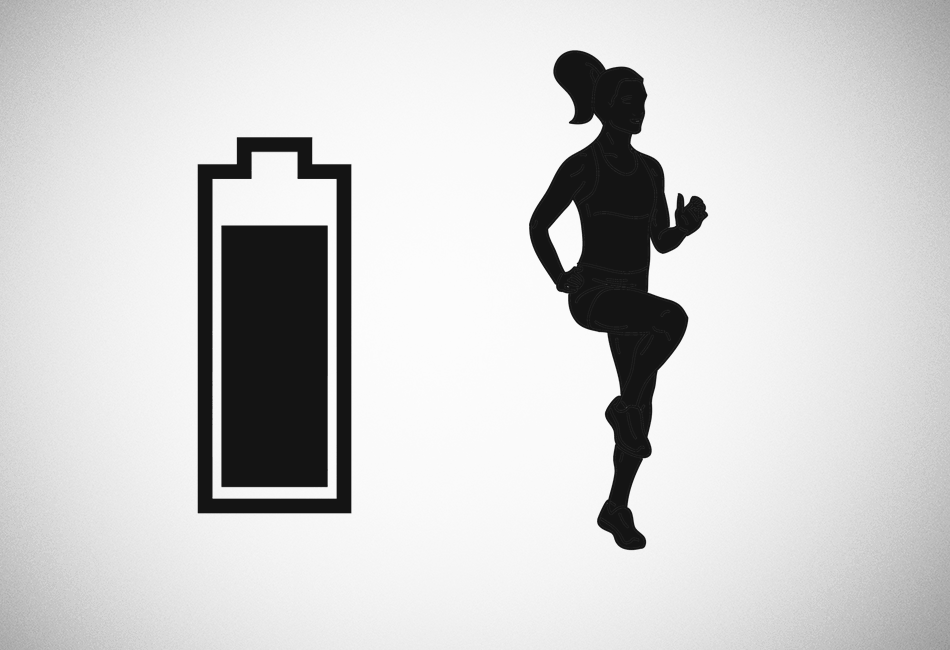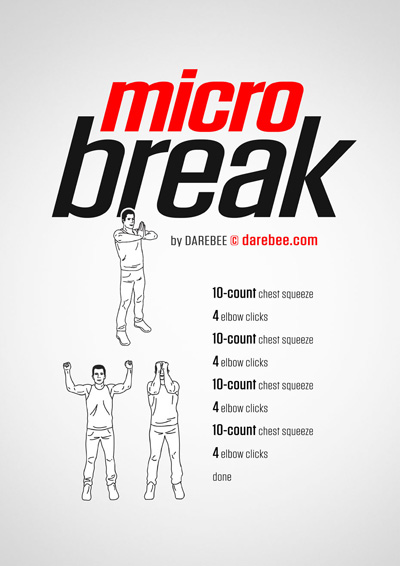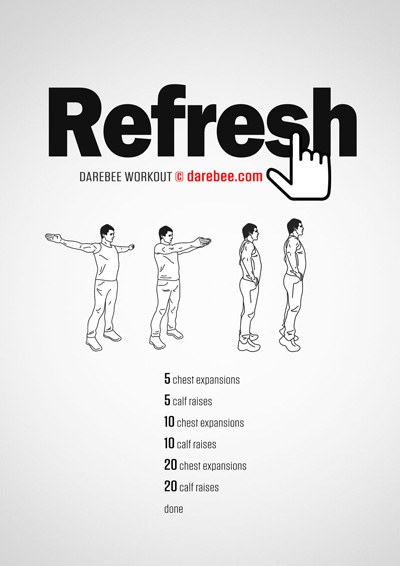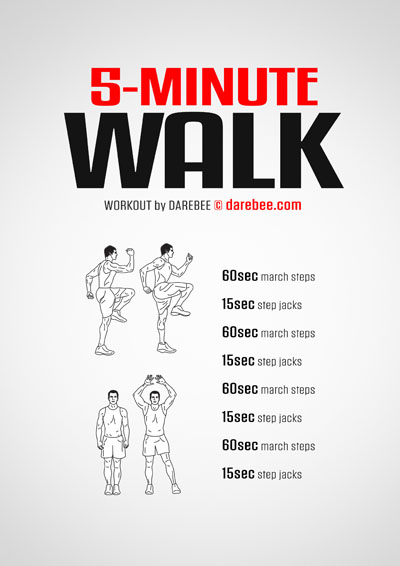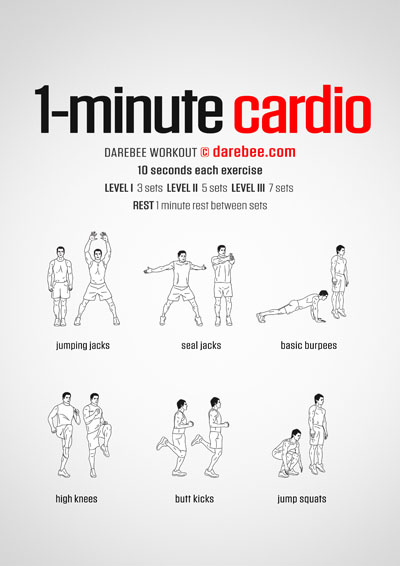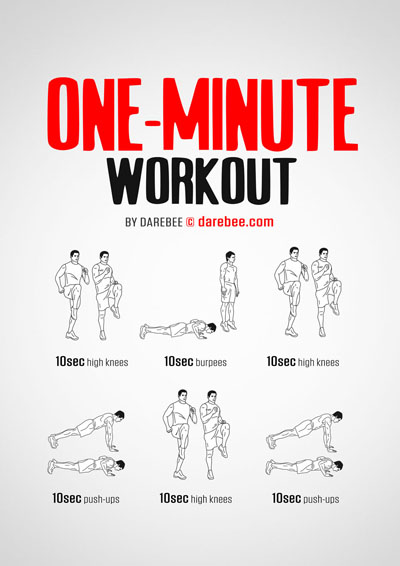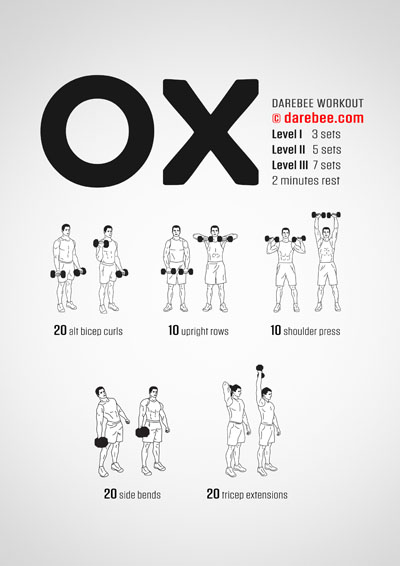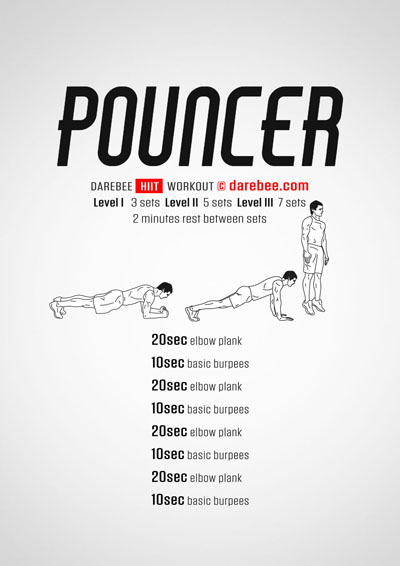There’s no question about it. If we each started each day with more energy than what we currently experience we’d get more done. We’d be more productive in our work, we’d have more energy for our friends and family and the upkeep and maintenance of the relationships that matter to us. And we’d knock our workouts out of the park, every time.
Although every person on the planet shares the same building materials we’re all different. Each one of us has different body composition, cellular musculature, dietary habits, past relationship and experience with physical activity and current level of physical activity. Because of all these differences we all start each day with an amount of available energy that is unique to us.
There is no universal formula that would give us all the same amount of energy, but there are a lot of things we can each do to start each day with more of the energy we each have and then there are a lot of things we can do that would allow us to maintain more energy throughout the day so we can be more productive, more efficient and more active.
This is exactly what we are looking at here and we can only do that by first better understanding where the energy we each have comes from and where it usually goes if we carry out zero intentional intervention.
Everything Runs On Sugar
Muscles, at a cellular level, require adenosine triphosphate (ATP) to work. ATP powers everything in the body. ATP is used to power physical movement but also every other activity undertaken by the body to help it remain healthy.
There is a small amount of ATP stored in muscles which is used up the moment they start working but after that they rely on sugar, in the form of glucose to replenish the ATP so they can continue to work.[1] Everything we ingest, carbohydrates, fat and protein, ultimately, if it is to be used as fuel, is broken down into glucose which, in different processes across the body is used to create glycogen, ribose, and deoxyribose, galactose, glycolipids, glycoproteins, and proteoglycans which, in turn, will be converted back into glucose when needed and then into ATP at a cellular level to power different processes.
Glucose is stored in the muscles and liver in the form of glycogen and it is glycogen that is broken down to turn back into glucose so we can replenish our energy supply when our ATP runs low. The component that turns glycogen into glucose is a peptide hormone called glucagon and the component that is used to turn glucose into glycogen so it can be stored in the muscles and liver is another peptide hormone called insulin.[2] Insulin is produced by the pancreas and it helps the body deal with glucose.
Every time we eat food of any type, for instance. The body needs to release insulin to deal with the glucose that is released in our bloodstream. Type-2 diabetes is a lifestyle disease[3] that happens when the ingestion of sugar is high for such a long period of time that it degrades the body’s capacity to deal with it.[4] At that point excess sugar builds up in the bloodstream and negatively impacts the function of many organs across the body.[5]
The inability of the body to transform glucose into glycogen through insulin affects its ability to store sufficient energy when it needs it and adequately use the energy it could have. To use an analogy it’s like having a full fuel tank in your car and a broken fuel pump. The fuel simply cannot get from the tank to the engine and, in the case of diabetes type-2, there is also no way to put fuel back in the tank if any is used up.
All of this then presents a broad picture of how energy comes into the body: via various foodstuffs that are broken down into glucose which is then turned into different formats so it can be stored and used to power the body’s many processes. This activity is made possible in the first instance through insulin which is used to take glucose from the bloodstream into different cells.
Insulin Spikes And Energy Levels
Everything that happens in the body and brain uses up glucose. The synthesis of ATP so we can exercise, for example, uses glucose. The repair and growth of muscle tissue uses up glucose. The energy that drives the lengthening of our hair and nails uses glucose. The functioning of our brain as we read articles like this uses up glucose.
The available glucose in our system rises and falls in tune with the insulin that’s released to transport it into the different cells that need it. The release of insulin, itself, requires a certain amount of energy which is provided by ATP, which is replenished through the transportation, storage and eventual break down of glucose into cells.
All the available energy we feel we have at any part of the day then is determined by the amount of glucose available in our bloodstream and the amount of insulin that is produced to transport it into the various cells of our body.
If we were a perfect biomechanical machine, the food we eat would be digested inside our stomach at a rate that would match the release of glucose in our bloodstream, the release of insulin from the pancreas and the energy needs of our body and brain. We would then be able to start the day with vigor, get through it without flagging and end it having depleted excess glucose levels in the bloodstream but with enough left over to run the repair, building and learning process our body and brain undergoes each night.
In that case we would never feel anything more than just physically tired at the end of the day, we would never put on any excess weight and we would always have the energy we needed to maintain our health and get things done.
Clearly none of us experiences this without some effort, so we need to now ask: why?
Energy Management In The Human Body
If we run on sugar so much then why can’t we just supply it? Why can’t we just, let’s say, start the day with a donut, to kickstart the body with some easy sugar and refined carbs and then add a donut every few hours when we felt we were flagging?
Our bodies have evolved over tens of thousands of years to handle energy that comes from food that is not easy to digest (like greens and unprocessed meats) in conjunction with energy demands that require long hours of physical activity. This is not how we live now however. Sugar is easily accessible to us, most of our food is refined and easy to digest and we live a mostly sedentary lifestyle with minimum bouts of physical activity.
The result of that is that when we eat our body is flooded with sugar which leads to constant insulin spikes. Insulin spikes cause the familiar sensations of the “sugar high”[7] and “sugar crash”[8] associated with corresponding sharpness in cognitive activity and feelings of low energy and fatigue.
Repeated insulin spikes due to the ingestion of sugars[9] and refined carbohydrates (and that includes artificial sweeteners)[10] leads to insulin resistance in the body which, in turn, affects the body’s ability to adequately manage its energy levels. At best this leads to the familiar feeling of exhaustion we feel at various parts of the day. At best this makes us age faster. At worst it leads to the development of type-2 diabetes and promotes the development of a variety of cancers in the body.[12]
We started this article looking for ways to better manage energy levels so we can be healthier, more productive, more active, live longer and, arguably, be happier. So the easy ingestion of sugar is clearly not the answer to that.
So, what should we do?
Ten Smart Strategies For Optimal Management Of Energy In The Human Body
Insulin, its production and release in the bloodstream and the body’s sensitivity to it are obviously the key here. So everything we do that helps maintain the insulin activity of the body at a balanced level is beneficial to us in terms of how effective and tired we feel each day, how well we start our day and, through an accumulation of days where we can better manage our store of energy, how healthy and long our life is and how happy we feel living it.
The suggestions below are all achievable, sustainable, life-long strategies that are supported by scientific literature and will lead to a marked improvement in how you feel throughout the day, how your body handles its intake and storage of energy, how tired you feel and how well you age as you get older.
- Improve sleep quality. Studies show[13] that the quality of sleep we get affects our metabolism[14], insulin production in the body and insulin sensitivity through a variety of complex mechanisms. Our guide to better sleep helps you find ways to improve the quality of your sleep even if you cannot sleep as long as you need to every day.
- Get active after eating. Light physical activity for as little as two minutes undertaken after a meal[15] helps control blood sugar levels, lower them and decrease insulin spikes from occurring in the body after a meal.
- Get active regularly. Heavy, physical activity at regular intervals in the week is a primary strategy for dealing with insulin sensitivity in the body[16] reducing and even reversing the effects of type-2 diabetes[17] and maintaining a high quality of life.
- Drink vinegar in water before a meal. Studies have shown that dissolving some vinegar in water and drinking it before a carbohydrate-heavy meal help reduce the insulin spike that happens afterwards[18] and reduces the amount of glucose that is released in the bloodstream[19]. In addition it helps with satiety during a meal and may lead to less excess calories being consumed.
- Eat greens before carbs. The order in which food is consumed kick-starts a series of chemical processes in the body that directly affect blood sugar levels and the subsequent insulin response. Eating carbohydrates after vegetables and meat, for example, lowers blood sugar levels[20]. Even patients with type-2 diabetes and an impaired insulin response benefit directly from eating greens before they eat meat or carbohydrates with each meal.[21]
- Have a savory start to the day. A three-week long study[22] showed that reduced consumption of sugar at breakfast (i.e. starting with savory versus a sweet breakfast) reduces overall consumption of daily sugar intake, normalizes blood sugar levels and helps avoid the roller-coaster of excess glucose levels, insulin spikes and energy troughs.
- Avoid sweet snacks. A recent study showed that snacking that introduces high quantities of salt and sugar in the body contributes to diabetes, ageing[23] and reduces the body’s overall effectiveness of managing its own energy stores.
- Have regular meal times. Regular meal times better prepare the body’s insulin response by correctly anticipating carbohydrate intake. A study[24] showed that by keeping the body to regular meal times the insulin response is managed much better.
- Make breakfast count. Breakfast may not be “the most important meal of the day” from a nutritional point of view as long as you get all your nutrients in, during the day. The energy input it provides however, is key to how you feel throughout the day. A 2020 study[25] showed that by taking a large amount of energy first thing in the morning we position the body to better manage insulin levels throughout the day and also determine its energy expenditure. So, a large, savory breakfast is likely to deliver better effects in terms of energy management throughout the day than, say, a couple of donuts and a coffee.
- Take a break. The brain runs on glucose and accounts for almost 20% of the energy needs of the body. A 2022 meta-analysis[26] of nearly two dozen studies showed that taking a micro-break of between 3 and 10 minutes from activities or tasks that required high levels of concentration contributes significantly “in preserving high levels of vigor and alleviating fatigue.”
Summary
The world we live in challenges us in the demands it makes on our body and mind and the stress it subjects both, to. Maintaining our efficiency and enjoying a steady level of energy throughout the day requires us to be smart in how we manage both our brain and body. We have to be aware of the effect of what we eat and when and understand better how to apply interventions in our diet and sedentary lifestyle so we can remain, in the short term, active and productive and in the long term stay healthy longer.
Suggestions On Workouts You Can Use
Research
1. Nakrani MN, Wineland RH, Anjum F. Physiology, Glucose Metabolism. [Updated 2022 Jul 25]. In: StatPearls [Internet]. Treasure Island (FL): StatPearls Publishing; 2023 Jan.
2. Hantzidiamantis PJ, Lappin SL. Physiology, Glucose. [Updated 2022 Sep 19]. In: StatPearls [Internet]. Treasure Island (FL): StatPearls Publishing; 2023 Jan-.
3. Trikkalinou A, Papazafiropoulou AK, Melidonis A. Type 2 diabetes and quality of life. World J Diabetes. 2017 Apr 15;8(4):120-129. doi: 10.4239/wjd.v8.i4.120. PMID: 28465788; PMCID: PMC5394731.
4. Repeated glucose spikes and insulin resistance synergistically deteriorate endothelial function and bardoxolone methyl ameliorates endothelial dysfunction. Kazuma Ogiso,Sigfrid Casmir Shayo,Shigeru Kawade,Hiroshi Hashiguchi,Takahisa Deguchi,Yoshihiko Nishio. Published: January 24, 2022.
5. What is Type-2 diabetes?
6. Macdonald IA. A review of recent evidence relating to sugars, insulin resistance and diabetes. Eur J Nutr. 2016 Nov;55(Suppl 2):17-23. doi: 10.1007/s00394-016-1340-8. Epub 2016 Nov 23. PMID: 27882410; PMCID: PMC5174139.
7. Codella R, Benedini S, Paini S, Caumo A, Adamo M, Terruzzi I, Ferrulli A, Macrì C, Andreoni L, Sterlicchio M, Luzi L. Effect of Sugar versus Mixed Breakfast on Metabolic and Neurofunctional Responses in Healthy Individuals. J Diabetes Res. 2017;2017:9634585. doi: 10.1155/2017/9634585. Epub 2017 Jun 19. PMID: 28706955; PMCID: PMC5494586.
8. Mantantzis K, Schlaghecken F, Sünram-Lea SI, Maylor EA. Sugar rush or sugar crash? A meta-analysis of carbohydrate effects on mood. Neurosci Biobehav Rev. 2019 Jun;101:45-67. doi: 10.1016/j.neubiorev.2019.03.016. Epub 2019 Apr 3. PMID: 30951762.
9. DiNicolantonio JJ, O'Keefe JH. Added Sugars Drive Insulin Resistance, Hyperinsulinemia, Hypertension, Type 2 Diabetes and Coronary Heart Disease. Mo Med. 2022 Nov-Dec;119(6):519-523. PMID: 36588634; PMCID: PMC9762218.
10. Mathur K, Agrawal RK, Nagpure S, Deshpande D. Effect of artificial sweeteners on insulin resistance among type-2 diabetes mellitus patients. J Family Med Prim Care. 2020 Jan 28;9(1):69-71. doi: 10.4103/jfmpc.jfmpc_329_19. PMID: 32110567; PMCID: PMC7014832.
11. Zhao J, Tan C, Imai R, Ukon N, Shimoyama S, Maejima Y, Omiya Y, Takahashi K, Ito H, Nan G, Zhao S, Shimomura K. Evaluation of organ glucose metabolism by 18F-FDG accumulation with insulin loading in aged mice compared with young normal mice. Sci Rep. 2021 Apr 1;11(1):7421. doi: 10.1038/s41598-021-86825-8. PMID: 33795778; PMCID: PMC8016832.
12. Epner M, Yang P, Wagner RW, Cohen L. Understanding the Link between Sugar and Cancer: An Examination of the Preclinical and Clinical Evidence. Cancers (Basel). 2022 Dec 8;14(24):6042. doi: 10.3390/cancers14246042. PMID: 36551528; PMCID: PMC9775518.
13. Hashemipour S, Ghorbani A, Khashayar A, Olfati H. Association of sleep quality with insulin resistance in obese or overweight subjects. Sleep Sci. 2021 Jan-Mar;14(Spec 1):75-78. doi: 10.5935/1984-0063.20200084. PMID: 34917277; PMCID: PMC8663725.
14. Rawat A, Gangwar AK, Tiwari S, Kant S, Garg RK, Singh PK. Sleep quality and insulin resistance in adolescent subjects with different circadian preference: A cross-sectional study. J Family Med Prim Care. 2019 Jul;8(7):2502-2505. doi: 10.4103/jfmpc.jfmpc_400_19. PMID: 31463284; PMCID: PMC6691405.
15. Reynolds AN, Venn BJ. The Timing of Activity after Eating Affects the Glycaemic Response of Healthy Adults: A Randomised Controlled Trial. Nutrients. 2018 Nov 13;10(11):1743. doi: 10.3390/nu10111743. PMID: 30428521; PMCID: PMC6267507.
16. Venkatasamy VV, Pericherla S, Manthuruthil S, Mishra S, Hanno R. Effect of Physical activity on Insulin Resistance, Inflammation and Oxidative Stress in Diabetes Mellitus. J Clin Diagn Res. 2013 Aug;7(8):1764-6. doi: 10.7860/JCDR/2013/6518.3306. Epub 2013 Jul 17. PMID: 24086908; PMCID: PMC3782965.
17. Lin Y, Fan R, Hao Z, Li J, Yang X, Zhang Y, Xia Y. The Association Between Physical Activity and Insulin Level Under Different Levels of Lipid Indices and Serum Uric Acid. Front Physiol. 2022 Feb 2;13:809669. doi: 10.3389/fphys.2022.809669. PMID: 35185617; PMCID: PMC8847671.
18. Mitrou P, Petsiou E, Papakonstantinou E, Maratou E, Lambadiari V, Dimitriadis P, Spanoudi F, Raptis SA, Dimitriadis G. Vinegar Consumption Increases Insulin-Stimulated Glucose Uptake by the Forearm Muscle in Humans with Type 2 Diabetes. J Diabetes Res. 2015;2015:175204. doi: 10.1155/2015/175204. Epub 2015 May 6. PMID: 26064976; PMCID: PMC4438142.
19. Ostman E, Granfeldt Y, Persson L, Björck I. Vinegar supplementation lowers glucose and insulin responses and increases satiety after a bread meal in healthy subjects. Eur J Clin Nutr. 2005 Sep;59(9):983-8. doi: 10.1038/sj.ejcn.1602197. PMID: 16015276.
20. Nishino K, Sakurai M, Takeshita Y, Takamura T. Consuming Carbohydrates after Meat or Vegetables Lowers Postprandial Excursions of Glucose and Insulin in Nondiabetic Subjects. J Nutr Sci Vitaminol (Tokyo). 2018;64(5):316-320. doi: 10.3177/jnsv.64.316. PMID: 30381620.
21. Imai S, Fukui M, Kajiyama S. Effect of eating vegetables before carbohydrates on glucose excursions in patients with type 2 diabetes. J Clin Biochem Nutr. 2014 Jan;54(1):7-11. doi: 10.3164/jcbn.13-67. Epub 2013 Dec 27. PMID: 24426184; PMCID: PMC3882489.
22. Effect of Plain Versus Sugar-Sweetened Breakfast on Energy Balance and Metabolic Health: A Randomized Crossover Trial. Obesity (Silver Spring). 2020 Jun;28(6):1157. doi: 10.1002/oby.22847. Epub 2020 Apr 29. Erratum for: Obesity (Silver Spring). 2020 Apr;28(4):740-748. PMID: 32441471; PMCID: PMC8097543.
23. Noha M. Almoraie, Rula Saqaan, Razan Alharthi, Amal Alamoudi, Lujain Badh, Israa M. Shatwan, Snacking patterns throughout the life span: potential implications on health, Nutrition Research, Volume 91, 2021, Pages 81-94, ISSN 0271-5317.
24. Farshchi HR, Taylor MA, Macdonald IA. Regular meal frequency creates more appropriate insulin sensitivity and lipid profiles compared with irregular meal frequency in healthy lean women. Eur J Clin Nutr. 2004 Jul;58(7):1071-7. doi: 10.1038/sj.ejcn.1601935. PMID: 15220950.
25. Rangaraj VR, Siddula A, Burgess HJ, Pannain S, Knutson KL. Association between Timing of Energy Intake and Insulin Sensitivity: A Cross-Sectional Study. Nutrients. 2020 Feb 16;12(2):503. doi: 10.3390/nu12020503. PMID: 32079066; PMCID: PMC7071301.
26. Albulescu P, Macsinga I, Rusu A, Sulea C, Bodnaru A, Tulbure BT. "Give me a break!" A systematic review and meta-analysis on the efficacy of micro-breaks for increasing well-being and performance. PLoS One. 2022 Aug 31;17(8):e0272460. doi: 10.1371/journal.pone.0272460. PMID: 36044424; PMCID: PMC9432722.

